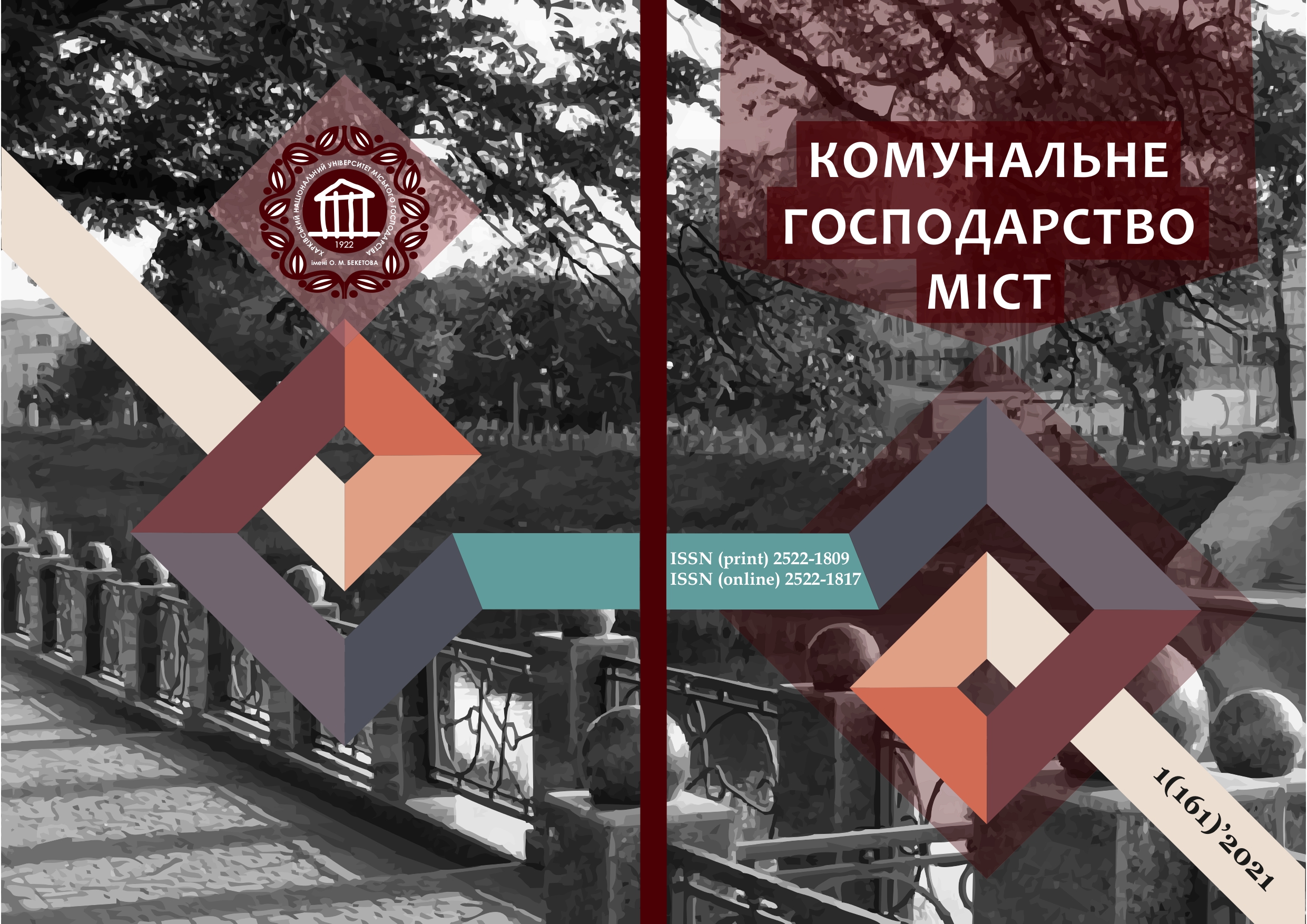SYSTEMATIZATION OF APPROACHES TO THE SOLUTION OF THE PROBLEM OF ENERGY SAVING IN THE CONSTRUCTION INDUSTRY
Array
Keywords:
ecological efficiency, energy-intensive production, energy efficiency, architectural and construction systems production waste, local materials.Abstract
The information on existing energy-efficient building materials and constructions on the basis of the accumulated experience of operation is analyzed; collected and systematized according to certain priorities requirements for building materials and structures, the order of their design and operation; the classification of energy saving methods is formulated, substantiated and offered for use; recommended a number of technical solutions to achieve energy savings in the construction of residential and public buildings. Possibilities of using highly effective foreign additives in concretes prepared with the use of local materials are considered, features of preservation of properties of concrete mix during transportation, time after laying of concrete in a timbering in various temperature conditions (summer, winter and off-season), use of vacuum processing are studied and investigated. which is aimed at further improvement of organizational and technological solutions for the construction of load-bearing structures of monolithic buildings. The recommendations on regulation of technological parameters of erection of responsible bearing designs, reduction of terms of construction, labor intensity and cost of works are reduced. Imperfect design solutions, outdated standards, defects in construction and operation lead to excessive heat loss in buildings. Architectural and construction systems of the new generation provide ample opportunities for organizing the interior of residential buildings, hygienic quality, safety and comfort of housing, as well as increasing energy efficiency and reducing material consumption of construction through technical re-equipment of existing housing and creating new production technologies.
References
2. Shelegeda B.G. Resource conservation in business: from the project to the exploitation of living rooms / B.G. Shelegeda, A.Yu. Kravtsov // Municipal economy of cities. nauk.-tekhn. zb. – 2010. – No. 96. – P. 410–418.
3. Ecological house building. Building materials: analytical review / A.V. Avrorin. – Novosibirsk, 1999. – 71 p. – (Ecology. Series / Russian Academy of Sciences, Siberian Branch of the State Public Library for Science and Technology, Far East State Technical University; issue 53).
4. Environmental housing construction. Energy saving problems / A.V. Avrorin, I.A. Ogorodnikov et al. - Novosibirsk: GPNTB SB RAS, GiproNII, AOZ «Ekodom», 1997. – 71 p. (Series «Ecology». Issue 43).
5. Dileep K. Life-cycle cost analysis of building wall and insulation materials. [Electronic resource] / K. Dileep, X.W. Zou Patrick, R. A. Memon. – First Published June 27, 2019. – Research Article: https: //doi.org/ 10.1177/1744259119857749. – Journal of Building Physics.
6. Alam M. Energy saving performance assessment and lessons learned from the operation of an active phase change materials system in a multi-storey building in Melbourne. Applied Energy. – 2019. – V. 238. – P. 1582–1595.
7. Vincelas, FFC, Ghislain, T, Robert, T Influence of the types of fuel and building material on energy savings into building in tropical region of Cameroon. Applied Thermal Engineering. – 2017. – V.122, – P. 806–819.
8. Ballarini, I. Energy refurbishment of the Italian residential building stock: energy and cost analysis through the application of the building typology / Ballarini I., V. Corrado, F. Madonna, S. Paduos, F. Ravasio // Energy Policy. – June 2017, V. 105. – P. 148–160.
9. Shapoval S.V. Substantiation of application of modern technological solutions of construction of superstructure of buildings with improved energy saving characteristics / S.V. Shapoval, V.V. Shapoval .– Scientific Herald of Construction, № 4 (82). – 2015. – P. 93–96.
10. Shapoval S.V., Bolotskikh O.M. Problems of resource conservation in the construction industry // Scientific Bulletin of Construction, № 1 (99) 2020. – 201–206 p.
11. Shapoval S.V. Energy-saving technology for the production of gypsum from industrial waste / S.V. Shapoval, M.A. Dolgiy // Municipal economy of cities: scientific and technical. zb. – 2009. – Issue. 88. – P. 64–68.
12. Khoroshenko V.D. Energy-saving technologies in the architecture of residential buildings in Ukraine / V.D. Khoroshenko, G.A. Demina // Nauk. spring building – H.: HDTUBA, HOTV ABU. – 2018. – Vip. 92, № 2. – P. 138–145.
13. From energy efficiency to energy independence / Site of the Ministry of Regional Development, Construction and Housing of Ukraine [Electronic resource]. – Access mode: http://www.minregion.gov.ua/wpcontent/uploads/2019/03/Vid-energoefektivnosti-do-energonezalezhnosti.pdf.
Downloads
Published
How to Cite
Issue
Section
License
The authors who publish in this collection agree with the following terms:
• The authors reserve the right to authorship of their work and give the magazine the right to first publish this work under the terms of license CC BY-NC-ND 4.0 (with the Designation of Authorship - Non-Commercial - Without Derivatives 4.0 International), which allows others to freely distribute the published work with a mandatory reference to the authors of the original work and the first publication of the work in this magazine.
• Authors have the right to make independent extra-exclusive work agreements in the form in which they were published by this magazine (for example, posting work in an electronic repository of an institution or publishing as part of a monograph), provided that the link to the first publication of the work in this journal is maintained. .
• Journal policy allows and encourages the publication of manuscripts on the Internet (for example, in institutions' repositories or on personal websites), both before the publication of this manuscript and during its editorial work, as it contributes to the emergence of productive scientific discussion and positively affects the efficiency and dynamics of the citation of the published work (see The Effect of Open Access).

